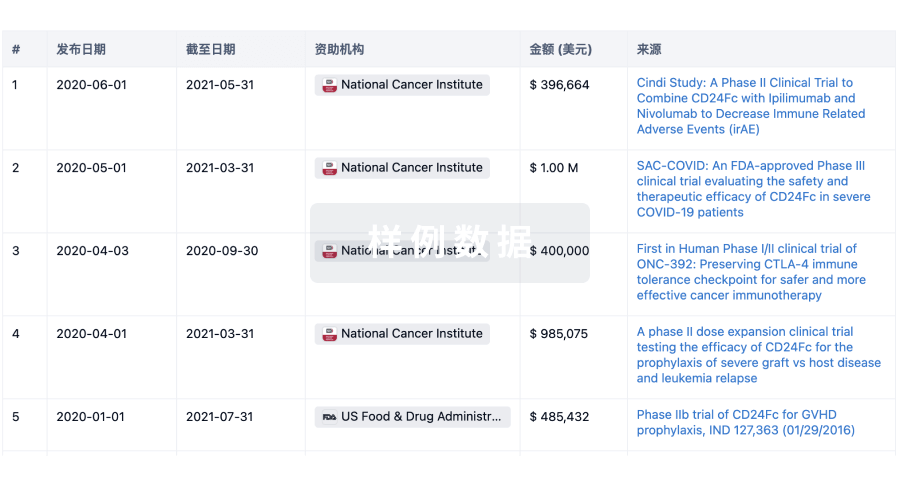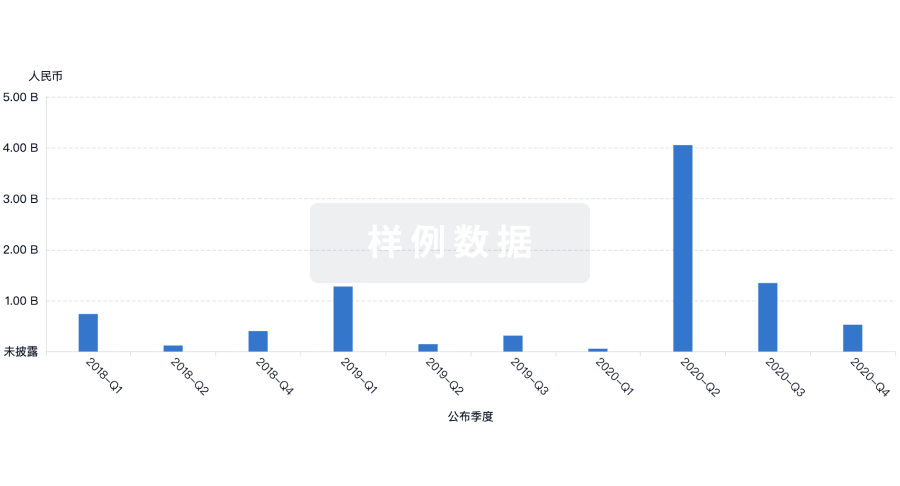预约演示
更新于:2025-09-09

Guangdong University of Technology
更新于:2025-09-09
概览
标签
皮肤和肌肉骨骼疾病
其他疾病
肿瘤
小分子化药
单克隆抗体
化学药
疾病领域得分
一眼洞穿机构专注的疾病领域
暂无数据
技术平台
公司药物应用最多的技术
暂无数据
靶点
公司最常开发的靶点
暂无数据
| 排名前五的药物类型 | 数量 |
|---|---|
| 小分子化药 | 6 |
| 化学药 | 2 |
| 外泌体药物 | 1 |
| 单克隆抗体 | 1 |
关联
9
项与 广东工业大学 相关的药物100 项与 广东工业大学 相关的临床结果
登录后查看更多信息
0 项与 广东工业大学 相关的专利(医药)
登录后查看更多信息
14,081
项与 广东工业大学 相关的文献(医药)2026-12-01·Nano-Micro Letters
High-Entropy Oxide Memristors for Neuromorphic Computing: From Material Engineering to Functional Integration
Review
作者: Li, Wen-Hua ; Tang, Zhen-Hua ; Gu, Xuan ; Yang, Jia-Li ; Tang, Xin-Gui ; Jiang, Yan-Ping ; Sun, Qi-Jun
Abstract:
High-entropy oxides (HEOs) have emerged as a promising class of memristive materials, characterized by entropy-stabilized crystal structures, multivalent cation coordination, and tunable defect landscapes. These intrinsic features enable forming-free resistive switching, multilevel conductance modulation, and synaptic plasticity, making HEOs attractive for neuromorphic computing. This review outlines recent progress in HEO-based memristors across materials engineering, switching mechanisms, and synaptic emulation. Particular attention is given to vacancy migration, phase transitions, and valence-state dynamics—mechanisms that underlie the switching behaviors observed in both amorphous and crystalline systems. Their relevance to neuromorphic functions such as short-term plasticity and spike-timing-dependent learning is also examined. While encouraging results have been achieved at the device level, challenges remain in conductance precision, variability control, and scalable integration. Addressing these demands a concerted effort across materials design, interface optimization, and task-aware modeling. With such integration, HEO memristors offer a compelling pathway toward energy-efficient and adaptable brain-inspired electronics.
2026-01-01·ULTRASONICS
Ultrasonic evaluation of porosity under microstructures-induced coupling effects in LPBF-fabricated alloys
Article
作者: Fan, Zheng ; Tai, Junfei ; Ji, Xuanrong
The designability of Laser powder bed fusion (LPBF) technology for material microstructure enables the fabrication of high-performance additive manufactured (AM) components. However, challenges remain due to inevitable pores induced by laser shock and parameter fluctuations during manufacturing, which introduce uncertainties in both porosity and microstructures. In this work, ultrasonic bulk wave is employed to evaluate porosity within the context of coupled pore-microstructure effects. Utilizing the distinct frequency-domain characteristics of pore scattering versus grain scattering, we propose a spectral covariance parameter that is sensitive to both mechanisms. Numerical studies involving multiple physical variables related to pores and microstructures reveal that the correlation between spectral covariance and porosity differs from that observed with ultrasonic attenuation. This distinction enables the joint decoupling and evaluation of porosity using both spectral covariance and ultrasonic attenuation measurements. In this study, a deep neural network (DNN) is trained using a combination of numerical and experimental data, yielding prediction results with an absolute porosity error of less than 0.3% across all experimental samples. The findings demonstrate that the proposed method effectively evaluates porosity in LPBF-fabricated alloys with the coupling effects from microstructures, offering a robust ultrasonic-based approach for assessing the structural integrity and safety of LPBF products.
2026-01-01·SPECTROCHIMICA ACTA PART A-MOLECULAR AND BIOMOLECULAR SPECTROSCOPY
Design and synthesis of a carbonyl–nitrogen multi-resonance thermally activated delayed fluorophore with enhanced charge transfer for electroluminescence application
Article
作者: Huo, Yanping ; Chen, Wen-Cheng ; Liu, Yuan ; Gong, Ya-Rong ; Tan, Ji-Hua ; Jin, Jia-Ming ; Qi, Lin-Na ; Shi, Chengxiang ; Li, Yu-Kang ; Li, Yan
By employing an "intramolecular lock" strategy, a novel multi-resonance thermally activated delayed fluorescence (MR-TADF) emitter, QAO-PhIDA, has been designed through modulating the excited-state properties of the QAO acceptor using a steric hindrance donor PhIDA. The appropriate electron donor facilitates effective intramolecular charge transfer (ICT), while retaining the MR-TADF characteristics. Additionally, the presence of the bulky donor effectively suppresses the aggregation-caused quenching (ACQ) behavior caused by long-range π-π stacking of the QAO chromophore, which is beneficial for achieving efficient luminescence under solid-state conditions. The QAO-PhIDA emitter exhibits an emission wavelength (λPL) of 489 nm with a narrow FWHM of 33 nm. The organic light-emitting diodes (OLEDs) device based on QAO-PhIDA achieves a maximum external quantum efficiency (EQEmax) of 18.0 %, which is a pre-eminently promising candidate for applications in OLEDs.
11
项与 广东工业大学 相关的新闻(医药)2025-05-09
·立国制药
1研发中心揭牌落成典礼2025年5月8日上午,在一片热烈的氛围中,广东立国制药有限公司研发中心落成典礼盛大举行。此次典礼汇聚了来自政府代表、行业专家、高校领导、合作伙伴及媒体代表等60余名各界嘉宾,共同见证广东立国制药在医药研发领域发展的重要里程碑时刻。本次活动通过庆典仪式、醒狮点睛、剪彩揭牌、参观等环节,全方位展现了立国制药深耕医药研发的坚定决心与雄厚实力,助力紫金县打造粤港大湾区医药产业人才与技术高地。庆典启幕,共话未来典礼伊始,现场播放了广东立国制药研发中心宣传片,通过画面生动地展现了公司自成立以来的辉煌历程与未来愿景。公司始终秉持 “创新驱动发展,科技智领未来” 的理念,深耕医药研发与生产领域,凭借卓越的品质和持续进取的精神,在行业内树立了良好的口碑。在全场雷鸣般的掌声中,典礼的序幕正式拉开。本次活动荣幸地邀请了来自各界的领导和嘉宾,他们分别是:紫金县委书记黄春彭同志、河源市市场监督管理局副局长蒙立新同志、紫金县委常委兼副县长肖奇聪同志、蓝塘镇党委书记朱海龙同志、广东工业大学(河源)协同创新研究院副院长黄国宏先生、广东工业大学揭阳校区副主任方岩雄先生、广东食品药品职业学院药学院党委书记田东山同志、广东药科大学药学院副院长张彦女士、广州松田职业学院江永南院长、河源市卫生学校校长戴佰阳先生等60余名来自政府、学校、企业和媒体的各界朋友。主持人代表广东立国制药有限公司,向各位嘉宾的到来致以最热烈的欢迎和最诚挚的感谢。领导致辞:政企共绘发展蓝图随后,领导致辞环节将典礼氛围推向了一个小高潮。首先,由广东立国制药有限公司副总经理兼研发中心主任王宝先生上台致辞。他在致辞中回顾了公司辉煌历程以及发展愿景。王宝先生表示,立国制药通过与Sandoz、Hikma等国际药企建立战略合作,聚焦头孢类高端仿制药研发,将打造“湾区北翼医药创新高地”。并依托Waxetil掩味剂等全球独家技术,加速国际化产能成果输出,深化产学研合作,推动技术专利成果持续转化。进一步加大科研投入,吸引更多优秀的人才,不断提升自主创新能力,致力于研发出更多安全、有效的药品,为广大患者带来福音,为推动我国医药产业的发展贡献立国力量。紧接着,紫金县委常委、副县长肖奇聪同志上台致辞。他对广东立国制药有限公司研发中心的落成表示了热烈的祝贺,并充分肯定了公司多年来在推动地方经济发展、促进就业、提升医药产业水平等方面所做出的积极贡献。肖奇聪常委指出,广东立国制药有限公司作为当地医药产业的重要支柱企业,研发中心的落成将进一步增强公司的核心竞争力,对于推动紫金县乃至河源市医药产业的转型升级具有重要的示范和引领作用。政府将一如既往地支持公司的发展,为企业创造更加良好的营商环境,助力企业在创新发展的道路上不断前行。传统与创新交融,剪彩揭牌掀高潮在激动人心的领导致辞之后,剪彩仪式作为本次典礼的高潮环节正式登场。随着主持人的邀请,10名剪彩嘉宾在礼仪人员的引导下有序上台。当嘉宾们手持金剪,随着全场倒计时 “5 - 4 - 3 - 2 - 1” 的喊声,共同剪下彩带的那一刻,现场响起了热烈的掌声和欢呼声,标志着广东立国制药有限公司研发中心正式投入使用,也寓意着公司在医药研发的道路上开启了崭新的篇章。剪彩仪式结束后,富有传统文化寓意的点睛仪式随即展开。在中国传统文化中,为瑞狮点睛有着赋予其生命和活力的美好寓意,象征着研发中心蓬勃发展、鸿运当头。随着点睛完成,精彩的舞狮表演为现场增添了喜庆的氛围,也展现了公司对于未来发展的美好期望和坚定信心。最后,在全场瞩目的目光下,迎来了研发中心正式揭牌的历史性时刻。紫金县委书记黄春彭同志和广东立国制药有限公司总经理邓江远先生共同为研发中心揭牌。随着红布缓缓揭开,“研发中心” 的牌匾正式亮相,现场再次响起热烈的掌声。随后,领导和嘉宾们在牌匾前合影留念,记录下这一具有纪念意义的重要时刻。广东立国制药有限公司研发中心落成典礼圆满结束。在礼仪人员的引导下,各位领导、嘉宾移步舞台前进行合影留念,留下了珍贵的集体记忆。深度参观,见证硬核实力典礼结束后,嘉宾们受邀移步参观研发中心,近距离感受公司在医药研发领域的先进设施和创新成果。王宝副总经理全方面为大家介绍实验室集成样品处理、合成实验、仪器分析等功能区,研发中心还配备了先进的紫外/红外光谱仪、液质联用色谱仪、电感耦合离子体-质谱仪,这些设备覆盖了药物工艺开发全流程,为医药创新研发提供强有力的技术支撑。以终为始,擘画医药新蓝图广东立国制药有限公司研发中心的落成,是公司坚持创新驱动发展战略的重要成果,也是公司在医药研发领域迈向更高台阶的新起点。在各级政府的大力支持、高校的科研合作以及各界合作伙伴的共同努力下,广东立国制药有限公司将以研发中心为依托,不断提升自身的创新能力和核心竞争力,在医药研发的道路上不断探索、勇于突破,为我国医药产业的发展和人民群众的健康事业做出更大的贡献,书写更加辉煌的篇章。关联新闻链接:广东立国制药有限公司:为紫金打造“湾区北翼医药创新高地”注入强劲动能赋能“百千万工程”,紫金新医药产业再燃“硬核引擎”!立国制药研发中心揭牌广东立国制药有限公司研发中心揭牌
高管变更
2024-12-17
The University of Hong Kong's Faculty of Dentistry has launched a community-based programme to detect oral health diseases among the elderly using mobile AI.
WHAT IT'S ABOUT
The Dental AI Community Care Project features an AI-powered mobile application for detecting gum inflammation. It will train community volunteers, comprising dental students and community residents, to provide personalised advice on oral care backed by GumAI, a technology developed by a team of university researchers in China and Malaysia.
The mobile application presents gum analysis results in colours to easily identify potential oral issues: red for poor oral health, yellow indicates caution, and green shows good health.
HKU Dentistry aims to expand the project, which currently runs for an initial three months, across the 18 districts of Hong Kong. The project is backed by an elderly-focused trade union and a support organisation; it also received support from law and district officials.
WHY IT MATTERS
Over a decade-old government survey noted that nearly nine in 10 seniors in the city had signs of gum disease or periodontitis while almost half of the elderly had untreated dental caries.
Hong Kong seniors have increasingly accessed dental services over the past decade with the utilisation rate at 37% based on the latest government statistics in 2019. The Research Office of Hong Kong's Legislative Council Secretariat attributed this to the government's effort to increase service accessibility, including free dental care for seniors receiving long-term or day care services. However, dental services remain limited, partly due to the low availability of dental professionals – approximately 3.7 dentists serve every 10,000 residents in the city.
THE LARGER TREND
In June last year, HKU Dentistry announced its research demonstrating AI's detection of gum inflammation or gingivitis in intraoral images of over 500 individuals. Findings, which were published in the World Dental Federation's International Dental Journal, showed that the AI detected redness, swelling, and bleeding along the gum margin with over 90% accuracy. HKU Dentistry researchers collaborated with those from Hong Kong Chu Hai College in Hong Kong, China's Guangdong University of Technology, and the National University of Malaysia for this study.
Beyond oral care, another research team from HKU Dentistry also developed a generative AI model for designing dental crowns. Their novel approach, called 3D-DCGAN (3D-Deep Convolutional Generative Adversarial Network), acquaints AI with good designs of natural and healthy dentitions. "During the training process, natural teeth morphological features were learned by the algorithm, so that it can design dental crowns comparable to a natural tooth — both morphologically and functionally," co-research investigator Dr Hao Ding explained. The research sought to address the limitations of current computer-aided design and manufacturing digital workflows, particularly considering labour and time.
2023-09-13
·美通社
深圳2023年9月13日 /美通社/ -- 跨越万里丝路,全球筑梦十年。今年是共建"一带一路"倡议提出十周年。健康丝绸之路作为其重要组成部分,连接着中国与世界医疗健康发展的纽带。
理邦作为健康事业的创新先行者,成为丝路共建的重要力量之一,近期来,理邦的多项突破性医疗科技和解决方案在中国国际医用仪器设备展览会(China-Hospeq 2023)暨技术交流会中集中展出,为健康丝路高质量发展赋能。
理邦超声亮相 China-Hospeq 2023
勇闯创新"无人区"
坚持高质可持续性发展路径
"流水不争先,争的是滔滔不绝。"
走创新、可持续的高质量发展路径,是实现国产替代的必由之路。近年来中国医疗器械专利数量在不断增长,包括关键性技术和创新性的发明专利。中国不乏创新,但颠覆性的创新才真正决定了国产替代的进程。在创新的高标准,独特性和前瞻性前提下,理邦不断开辟"无人区",一批自主创新研发的高端产品脱颖而出。
备受关注的新一代旗舰机型F15系列胎儿/母亲监护仪,以自主研发、具有多项专利的胎心电子监护"IQ(正交)解调创新技术",创新独步地解决了胎儿监护"加倍"、"减半"、误测母亲心率等原理性缺陷问题,大幅提升了产程胎儿监护的准确率,凭借该项专利技术,相关临床研究成功收录于Maternal-Fetal Medicine (MFM)杂志,产品同时获得了国家制造业单项冠军产品奖,在中国一大批三甲医院及英国、德国、西班牙、意大利等欧美高端医疗机构顺利装机并得到认可。
以终为始,理邦所有创新的出发点,都源于用户需求和临床痛点。在监护领域,理邦全新一代的iX系列病人监护仪,打造了行业内创新的血压监测技术——CNBP连续无创血压监测。在技术上避免传统无创袖带血压监测间隙期的盲区,在测量上不需要传统袖带充气加压或传统穿刺侵入,为患者提供更安全、舒适的就诊体验,成为行业内血压监测新技术非常重要的实践。
高质量的持续研发创新,是一场循序渐进的持久战。理邦未曾停下攀登顶峰的脚步,探索创新的"无人区",致力打破颠覆式创新稀缺的局面。多年来形成了多层面、多维度、多形式的创新融合,尤其是在理邦成立的国家级博士后工作站,为医疗器械行业领域培养了一批高精尖的人才,推动更多突破性、颠覆式的创新。
多年来,理邦与中科院理化所、解放军总医院联合承担"国家科技支撑计划",与中国人民解放军军事医学科学院微生物流行病研究所联合承担"广东省中国科学院全面战略合作项目",与南方医科大联合建立"广东省重大疾病临床快速诊断生物传感工程技术研究中心",孵化出了拥有70多项国内外专利的i15血气生化分析仪、全球创新的m16磁敏免疫分析仪等一系列国内首创、国际领先的明星产品。
目前正在加速推进湿式血气及第二代干式血气上市,打造"干式+湿式"全产品解决方案,未来几年有望打破国际垄断的局面,实现全链条国产替代。
在不断的突破中,颠覆性的创新研发成果显著。目前理邦国内外授权专利/专利申请达1700余件,2022年7月,公司与广东工业大学共同作为专利权人的"一种基于非负盲分离胎儿心电瞬时心率识别方法及系统"专利获得"第23届中国专利奖银奖",同年10月理邦被评为国家知识产权优势企业,研发实力和知识产权积累不断实现跨越。
与人民日报健康客户端分享理邦“国产替代与出海”进程
"一个有价值的品牌,具有极致创新和可持续发展的品质,它的核心竞争力在于产品本身,并且能够经得起市场的考验。"理邦市场传播与策划总监崔蓉在接受人民日报健康客户端的采访中表示,"在中国国产替代的大环境下,真正做产品、坚持创新的品牌迎来了发展黄金期。"
加速全球化步伐
共赴健康丝路下一个十年
下一个十年,"一带一路"将向"数字丝绸之路"跨越。
"一带一路"健康丝路的朋友圈持续扩大,已经形成了创新技术碰撞交流、开放包容的新格局。在健康丝路迈向高质量发展阶段,理邦"乘风出海"的步伐不断加速。
一方面持续打造本土化闭环生态链,加强本土化服务和体验。另一方面,理邦正加速更智能化、信息化解决方案的海外布局,这也是理邦未来全球化布局的重点之一,以大数据、人工智能技术为代表的"数字丝绸之路"将成为"一带一路"沿线国家医疗发展的新引擎。泰国呵叻府玛哈拉医院是泰国卫生部直属最大的地区性医院,代表着泰国最顶尖的行业水平,拥有超过2000张床位。理邦紧密结合用户的需求,为其提供了定制化的解决方案,400台elite V系列插件式监护仪、150台iM20转运监护仪、50套CMS中央监护系统服务于该医院,助力医院实现信息化升级。
马来西亚赛城医院作为卫生部下属的公立医院,在产科领域一直不断寻求更智能、患者体验更舒适的监护管理模式。理邦产科中央监护系统和F15胎儿/母亲监护仪成为了医院的首选,帮助医院攻破传统胎监壁垒,打造集中监护管理新模式。
结合近三十年的临床实践,理邦Allink智慧联以信息化技术为驱动,提出软硬件一体化的整体解决方案,以一整套完整开放的智慧生态,融入妇幼健康,病人监护、心电诊断、急诊急救、居家健康五大医疗应用场景。
理邦 Allink 智慧联生态
在国内,目前已累计完成超5000家医疗机构及院内临床科室的信息化网络建设,远程心电实现了200W+人次远程诊断服务,妇幼保健服务达到了150W+人次健康管理服务。
对于国际市场,理邦将积极通过与国际各大主流EMR厂商建立合作交流,为理邦设备顺利入驻欧美的主流院内市场夯基蓄势。截止目前,公司已逐步实现了国际大部分主流EMR厂商的技术对接,这将为理邦打开国际发达国家院内市场奠定坚实的技术基础。
"一带一路"倡议源自中国,更属于世界。十年的共荣共长,"让医疗创新成果惠及每个人"的使命迈向了更广阔的世界舞台。下一个十年,我们继续加速全球化步伐,以坚持和突破与健康丝路高质量发展同向而行,共同繁荣。
100 项与 广东工业大学 相关的药物交易
登录后查看更多信息
100 项与 广东工业大学 相关的转化医学
登录后查看更多信息
组织架构
使用我们的机构树数据加速您的研究。
登录
或

管线布局
2025年11月06日管线快照
管线布局中药物为当前组织机构及其子机构作为药物机构进行统计,早期临床1期并入临床1期,临床1/2期并入临床2期,临床2/3期并入临床3期
药物发现
5
4
临床前
登录后查看更多信息
当前项目
| 药物(靶点) | 适应症 | 全球最高研发状态 |
|---|---|---|
GDU-952 ( AHR ) | 特应性皮炎 更多 | 临床前 |
SIRT3 agonists(Guangdong University of Technology) ( SIRT3 ) | 心血管疾病 更多 | 临床前 |
Carboxymethylated Poria Cocos Polysaccharides ( NF-κB x Nrf2 ) | 脓毒症所致急性肾损伤 更多 | 临床前 |
AZD@EV-T ( IAP ) | 三阴性乳腺癌 更多 | 临床前 |
CN116621963 ( IGFBP1 )专利挖掘 | 血液及淋巴系统疾病 更多 | 药物发现 |
登录后查看更多信息
药物交易
使用我们的药物交易数据加速您的研究。
登录
或

转化医学
使用我们的转化医学数据加速您的研究。
登录
或

营收
使用 Synapse 探索超过 36 万个组织的财务状况。
登录
或

科研基金(NIH)
访问超过 200 万项资助和基金信息,以提升您的研究之旅。
登录
或

投资
深入了解从初创企业到成熟企业的最新公司投资动态。
登录
或

融资
发掘融资趋势以验证和推进您的投资机会。
登录
或

生物医药百科问答
全新生物医药AI Agent 覆盖科研全链路,让突破性发现快人一步
立即开始免费试用!
智慧芽新药情报库是智慧芽专为生命科学人士构建的基于AI的创新药情报平台,助您全方位提升您的研发与决策效率。
立即开始数据试用!
智慧芽新药库数据也通过智慧芽数据服务平台,以API或者数据包形式对外开放,助您更加充分利用智慧芽新药情报信息。
生物序列数据库
生物药研发创新
免费使用
化学结构数据库
小分子化药研发创新
免费使用